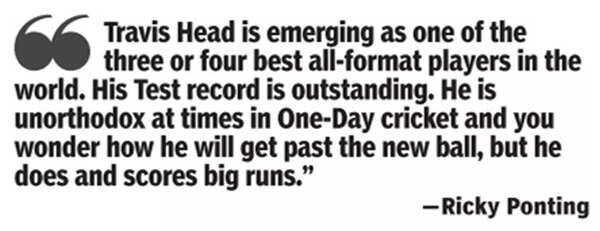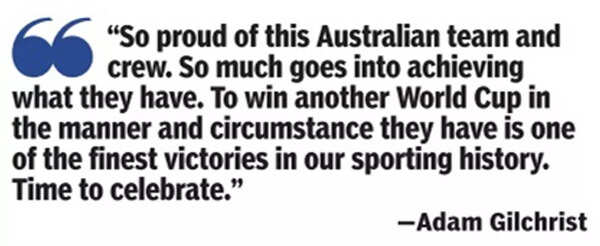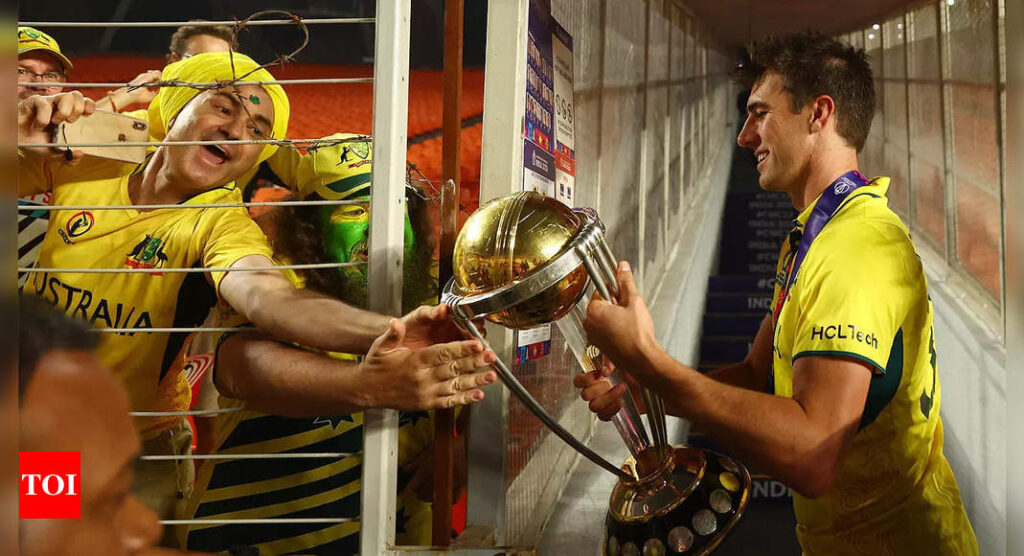[ad_1]
AHMEDABAD: Ticketing chaos.Visa issues for Pakistani fans and journalists. Last-minute schedule changes. Despite several organizational blips, which included the tournament opener between England and New Zealand being played to vast empty galleries at the Narendra Modi Stadium, the men’s ODI World Cup 2023 seemed to have passed an acid test.
With inspirational performances from less-established teams like Afghanistan, who notched up four wins from nine games and beat three former world champions – England, Pakistan, and Sri Lanka – and almost beat Australia in Mumbai, the tournament picked up pace and interest after the first week.

The Netherlands too stunned South Africa and that only added to the allure of the round-robin stage. While defending champions England limped out of the event and failed to make the semis, playing an uncharacteristically timid brand of cricket, sub-continental giants Pakistan, who played on Indian soil for the first time in seven years, imploded because of their bowling.
Yes, the end was bitterly disappointing for India as they lost to Australia by six wickets here, but the way the host nation played till the semifinal, winning 10 matches in a row, kept the anticipation and interest levels high. The nation was hooked to Virat Kohli’s 50th ODI ton, that took him past Indian great Sachin Tendulkar. Also, in a land that has produced champion batters, it was India’s bowlers – especially the pacers – that led the charge to the final.
While there were many one-sided contests – thanks to teams with powerhouse batting lineups notching up huge scores and then bowling sides out cheaply – the prospect of watching a proper contest between bat and ball won over. The thrill of watching established Test players succeed in a format that is being played less and less – and hence proving more difficult to crack – kept fans engaged.

The fact that players like Virat Kohli, Rohit Sharma and Quinton de Kock topped the run-scoring charts and bowlers like Mohammed Shami and Jasprit Bumrah featured in the top-wicket-taker’s charts showed that ODIs, as a format, can be mastered by players who are at home in Test cricket.
With all bilateral ODIs being limited to a maximum of three-match series and multi-team tournaments like the annual triangular in Sharjah or Australia vanishing from the calendars, T20 leagues have got a chance to mushroom and siphon off talent. Players like Kiwi pacer Trent Boult have opted not to sign a national contract and turn a free agent. Yet, nation versus nation in a tournament that comes around once in four years is what gets fans and players excited.
“That’s huge. The pinnacle of international cricket, winning a One-Day World Cup. Especially over here in India,” said victorious Aussie skipper Pat Cummins and reiterated that he had “fallen in love with ODIs again” during this World Cup.

There were epic comebacks, like the one Australia staged at the Wankhede against Afghanistan, as Glenn Maxwell, on one leg, smashed the first-ever double hundred in a run-chase. There were near heists like New Zealand staged against the Aussies in Dharamshala, where they nearly chased down 388 and fell five runs short, ensuring bums on seats and eyes on the TV or mobile phones.
That over one million people watched the game from the stands in a tournament stretching to 48 matches proved that in India, ODI cricket still has relevance, especially in tournament play. “I think the scenario where every game really matters, it does make it a bit different to just a bilateral ODI. The World Cup’s got such rich history, I’m sure it’s going to be around for a long time,” stressed Cummins.
Before the final against Australia, India skipper Rohit Sharma too stressed how he has grown up watching 50-over World Cups and how this was the biggest event for him.

Former players like Ravi Shastri, though, feel that the format is too long and want ODIs reduced to 40 overs a side. Sachin Tendulkar wants the 50-over format to stay but wants it to be divided into four quarters of 25 overs each. However, Virender Sehwag, during the ICC Hall of Fame awards in Mumbai last fortnight, said there was no need to tinker with the format.
“Why should the format be changed? If people want a shorter game, they can watch T20. Why destroy this format,” he asked.
The ICC meeting scheduled in Ahmedabad, where the stakeholders will be discussing the way forward for the ODIs, will offer insights. Maybe, playing bilateral ODIs only in the year of ODI World Cups could be an idea they might want to consider.
[ad_2]
Source link










More Stories
Australia exposed India’s little chinks in World Cup final: Sanjay Manjrekar | Cricket News
Rahul Dravid, BCCI engage in discussion but board inclined towards new coach | Cricket News
IPL 2024: Delhi Capitals retain Prithvi Shaw | Cricket News